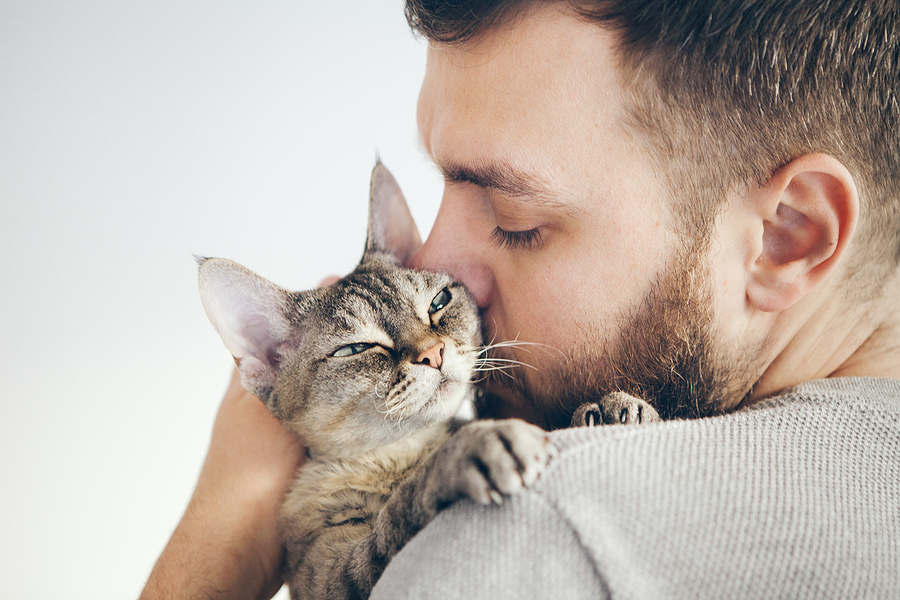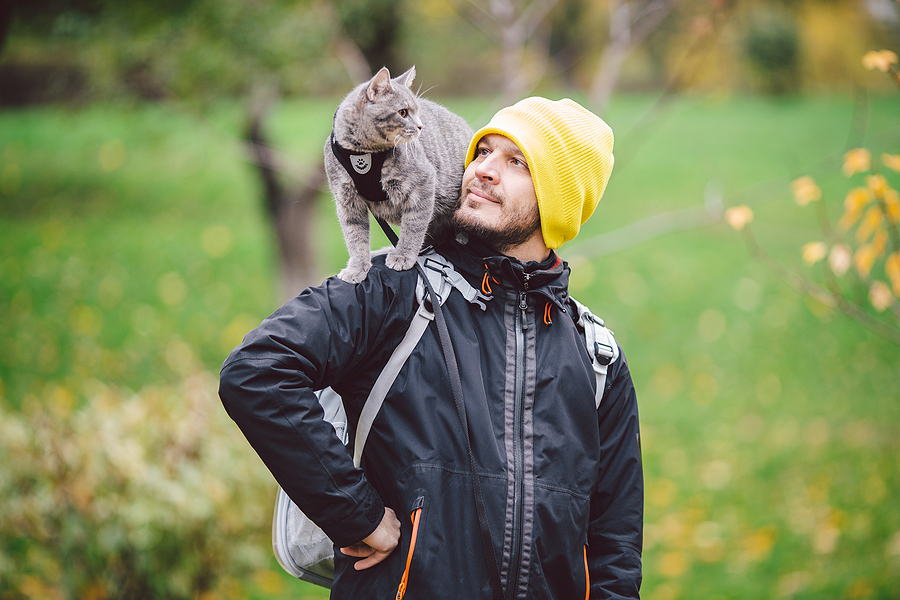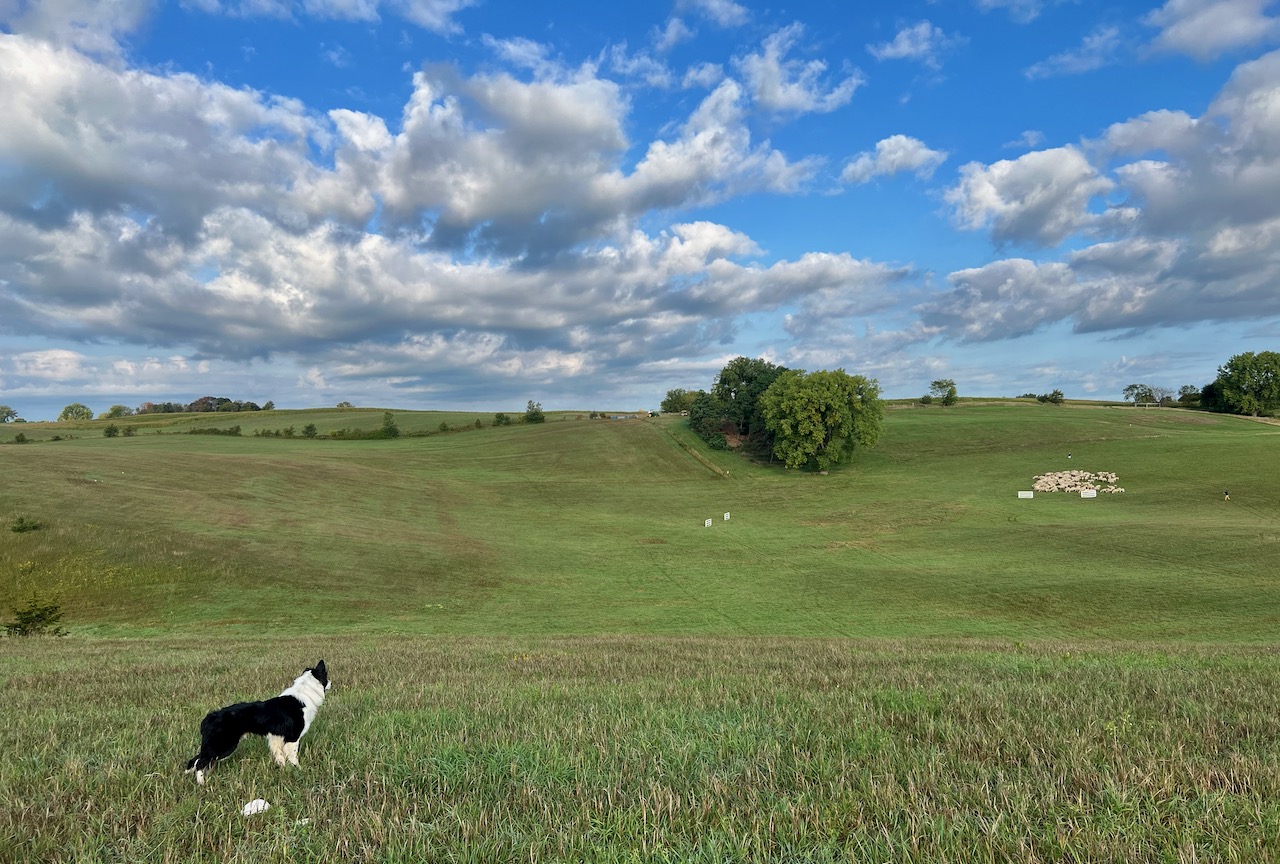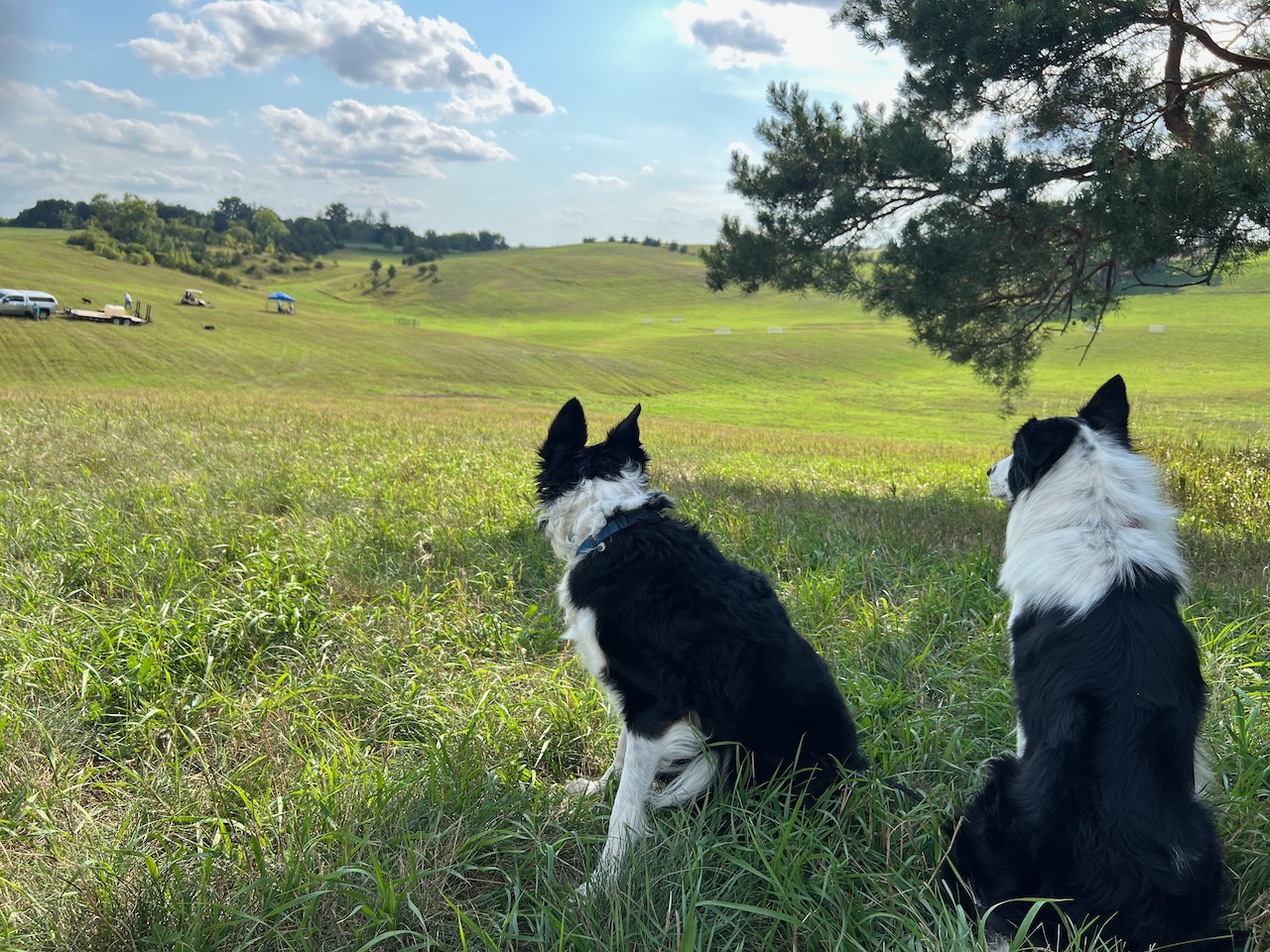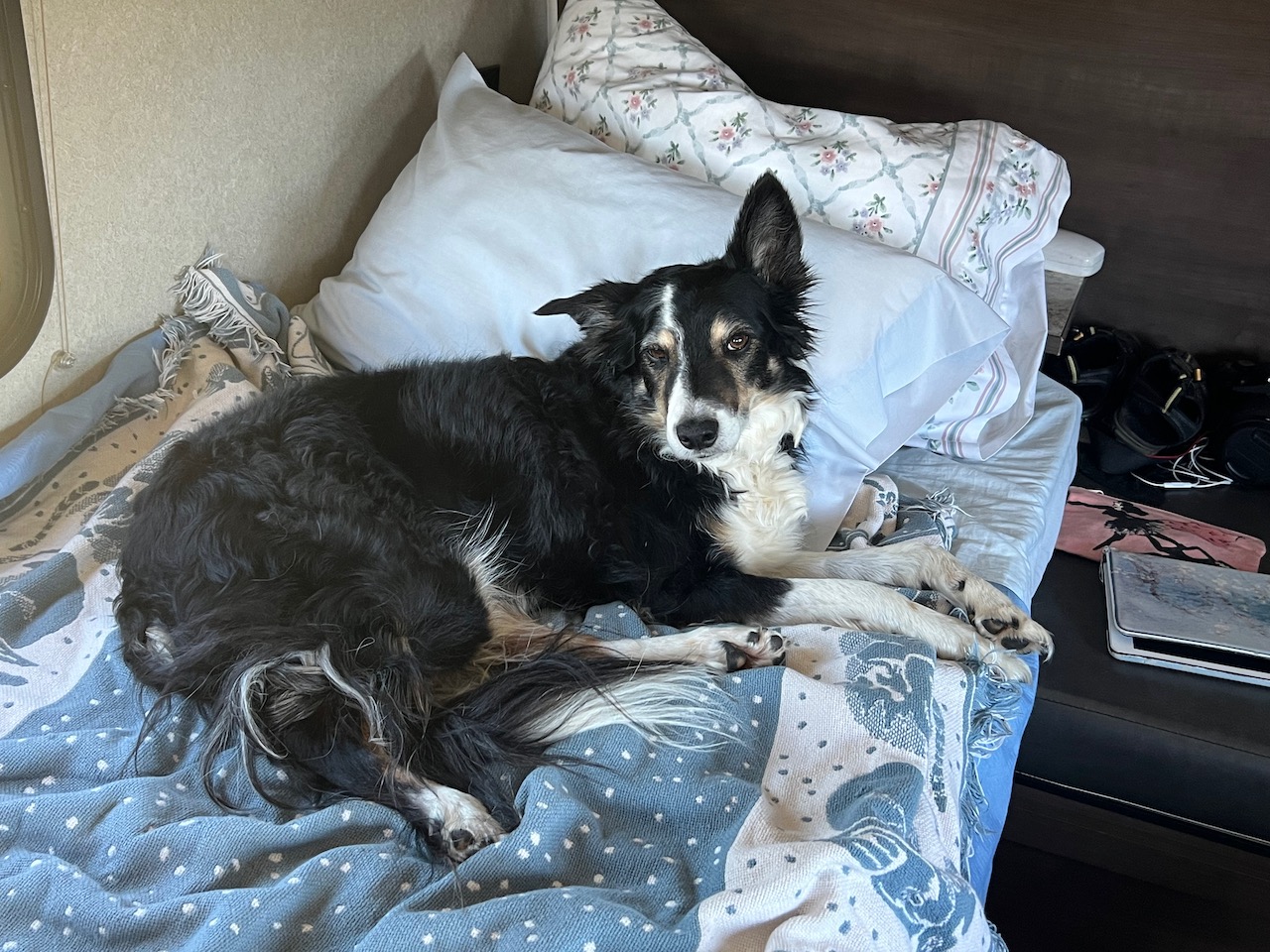Location. Location. Location. Or, perhaps, environment, environment, environment. That’s one of the keys to making your cat(s) truly happy, as author Zazie Todd, PhD, told me in an interview we did last week about her excellent new book Purr: The Science of Making Your Cat Happy.
In a way, it’s simple: Understand cats, and act accordingly. Cats need some quiet, safe spaces–which could be cave-like or high up, access to “multiple and separated resources,” and plenty of opportunities to use their bodies and their brains as they were intended. They also need to be at a healthy weight, and living with people who understand something about how cats communicate.
And yet, cats are so often misunderstood. Stereotypes abound about cats being aloof, rude, devious, and on and on. Many cats can live well on their own, but that doesn’t mean that they are asocial, or that they are always able to take care of themselves.
Cats may be predators, but they are also prey. They are very small, in the way of the world, and at risk from predators themselves, including owls, eagles, coyotes, bobcats, dogs, etc. Thus, the hard-wired need for plenty of places to feel safe–either high up in space, or curled up in a cave somewhere that no one else can get to. This, of course, leads to all kinds of drama–who hasn’t had a cat who “disappeared” and was finally found in a drawer or a hole in the wall? Providing safe spaces from the get go can often eliminate such adventures, and is a key to creating an environment that encourages your cat to relax.
The stereotype of cats as loners also can do a lot of harm. Dr. Todd and I talked a long time about how misunderstanding the social system of cats, and how they communicate, can lead to these beliefs. Cats are not Labradors (neither are many Labradors, if you get my drift). They are very social, if the environment provides enough resources, but also need to make their own choices. (Again: Small, vulnerable, as well as solitary hunters.) They hate being stared at or grabbed at: Thus, the story we have all told an infinite number of times of the cats who are attracted people who either are allergic, or just don’t like cats. These are the folks who don’t stare, don’t pester, and don’t reach out.
As you can see in just the first chapter of Purr, there is a lot you can do to communicate effectively with cats, even shy ones. Both Zazie and I admitted we felt like magicians after learning to use long, slow eye blinks and head scans to communicate with cats who ended up bunting us for head rubs rather than hiding in a closet when company comes.
The need to physically interact with someone else’s pet seems to be almost universal in some societies. Or to have someone do so to your own pet, even when the animal is broadcasting requests to be left alone. I can’t tell you the number of people–over a thousand for sure–who have thrust their dog or cat at me when I’m doing my best to stay out of its space, as it clearly desires. You might get away with it with many dogs, but very few cats are going to be able to handle that much lack of control.
Cats, as Dr. Todd reminds us in Purr, also need mental and physical exercise. It is true that they are often fine when left alone all day–it helps to be hard-wired as a solitary hunter–but that doesn’t mean they don’t need your attention when you come home. Soooo many behavioral problems could be prevented if cats just got the amount of stimulation they needed, that means lots of time interacting with toys and games to keep their brains busy, especially if they are restricted to the indoors. And would eliminate the epidemic of fat cats out there.)
I’m just skimming the surface here: Purr is an easily readable, thorough, and fascinating read about what cats need. It’s full of accessible science and practical advice. It’s design is the same format as Wag: The Science of Making Your Dog Happy, with sections on getting a new cat/kitten, setting up the environment, training, vet care, enrichment, social systems, feeding, behavior problems and the special needs of elderly cats. That’s a lot in this engaging testament to the wonderfulness of cats.
Full Disclosure: I told Dr. Todd that we are “soul sisters,” because we both love science and research, especially when we can apply it to improving the relationships between people and animals. Her book is full of great research that could interest anyone who loves reading about animal behavior. Example: Cats tended to shift their gaze to the left when fearful, or to the right when relaxed. There’s tons of interesting research results in this book, but all given in service doing our best to give our cats the best lives we can. Hear hear to that!
MEANWHILE, back on the farm. Well, it’s been a week. And a half. Lots of wonderful times at the WWSDA Midwest Championship Sheepdog Trials, along with Skip getting tangled, terrifyingly, in a saggy wire fence on his second run, food poisoning for me when we got home, and a painfully injured hand for Jim right now. Yup, life.
First, the good: The Championship was a great trial thanks to the hard work of many people, especially the hard-working trial committee. (I’m talking about you, Claudia, Jennifer, Suzanne, and Pierce, along with dozens of others.) It’s on a stunningly beautiful field, illustrated by this shot of Skip and I both looking longingly at it, imagining the outrun that he was bred for. Here the flock is being moved between runs from the rest area to the “set out” pens.
There was lots more good. My primary goal in our first run was to not hesitate to leave the post if things weren’t going well. That doesn’t sound difficult, but it is for me; I get so hyper-focused on each step of the course that you might as well put my feet in concrete. At our last trial I found myself yelling at Skip, which still makes me disgusted with myself. I resolved Never Again. So on our first run I first called him in on his too wide outrun, which lost us points but was necessary and better than just letting it happen. He listened well, did an okay lift and a somewhat sloppy but reasonable fetch, but then went back to a bad old habit of ignoring my stop whistle to start the cross drive. He flew around to the back of the sheep (he should’ve been at nine o’clock, not twelve) and tried to bring them back to me. Safer. Easier. Understandable for a young dog but not a five-year old.
I immediately left the post and called him off the sheep. That’s the correction–no more work for you. I was pleased, because, as absurd as it sounds, it was victory for me. I didn’t let him keep going, I didn’t yell, I just went out there and called him off. And who would feel bad about getting “letters rather than points” (RT for retired for example), when only 1/3 of the more experienced handlers in the previous Open class got any points themselves?
Another highlight was getting to work “exhaust” for later runs with Maggie and Skip. The course is hilly and huge, and to keep things moving you need several teams to move the sheep off of the field between the runs. Most of the times, it’s pretty easy–the sheep know where the rest pen is, and go there by themselves. But not always, and you never know when your dog is going to have to do some important work. Skip did a brilliant job finessing a single ewe who decided to go rogue without putting too much pressure on her, and Maggie quickly deterred a group which decided to go on a excursion out east and tucked them back onto the course before we ended up in Adventureland.
They both love doing this work, and so do I. Here they are between runs, patiently (Maggie) and impatiently (Skip) waiting to see who gets to work next.
I also did a little announcing on the day of the Finals on Labor Day, always an amazing day and fun for everyone. If you’ve never seen it and are anywhere in the area (Hudson, WI), don’t miss it. It’s a phenomenal example of Olympic Quality work of both handler and dogs.
THE BAD: Ah, Skip. Skip did beautifully on his second run until the sheep took off like deer in the middle of the cross drive and he ran around wide to try to stop them. If he hadn’t run so wide he might not have, but he ended behind a fence that blocked him from moving forward. Clearly, it was only a partial fence–because he got behind it right? So I told him to “go around,” a cue he knows, and pointed to his right. He took it, bless him, and ended up running smack into a half up, half down fence wire that caught him up like a trap. He got his legs tangled up in it and at one point me and a couple of hundred spectators watched him thrashing up in the air like a fly caught in a spider’s web.
Holy crap. He got out of it as I ran down the hill yelling LIE DOWN LIE DOWN STAY THERE STAY THERE, which he did. I am sure there are more details to add, but I can’t even watch the video yet. It was really truly scary. He didn’t seem to be injured, but I walked him around for 30 minutes to cool him out and keep him loose. As best I can tell he was unfazed too, but we’ll see next time we trial. I didn’t do as well, having had the smoke alarm in the camper go off in the morning, as well as a fence post being pounded in directly behind me just as I was about to send Skip. (No blame to anyone here, they were setting up a shade tent for the judge and didn’t realize I was ready to run.) Abrupt loud noises out of the blue are one of my triggers, not to mention watching my dog almost be badly injured, so by Saturday night I was curled up in bed at a motel, while Jim went out to get us take out burgers instead of the romantic dinner out we’d planned.
The good part from this is that 1) Skip is fine best I can tell, 2) I’m totally fine–I know how to recover, just took a little time, and 3), the organizers fixed the fence problem right away, although we all know that it might not have happened if Skip doesn’t run so wide.
I might as well get it all said: Along with trying to join the land of the living, we learned this week that Skip has Panus, a progressive aut0-immune eye disease that causes blindness if not treated. At one point I understood a vet to say that it wasn’t treatable, so . . . Yeah. But it usually is, and he’s already on eye ointment and I’m living with the belief that he’ll be in the category that is fine, just FINE OF COURSE HE WILL BE, as long as he gets his meds regularly. Here’s a photo of Skip’s eye showing the raised fuzzy pink circle that is typical of Panus.
THE UGLY: I came home to food poisoning. The kind that is, to quote the nurse I talked to, “violent.” Enough said. I had to lose going to the next weekend’s trial (damn) because of it, and can’t say I’m even totally over it yet, but the “body as a firehose” stage is over, thank heaven. I don’t mind losing 5 pounds now either, even after eating chicken broth and toast for 2 days.
Not wanting to leave you all with all that, here are some of my other favorite photos from the WWSDA trial. First, can you tell how much Princess Maggie loves the camper? (She’d like to be Queen but sorry Maggie, you just don’t have the gravitas.) She does wonder where I’m going to sleep though. (Answer, curled up next to her in a squished up ball.)
And here’s to silver linings, they are always there, we just can’t always see them.
I hope any clouds in your life bring either needed rain, or beautiful silver linings too.
Warmest wishes for the week ahead.

